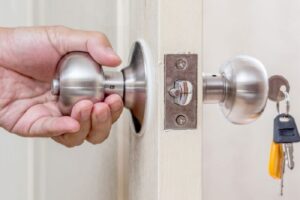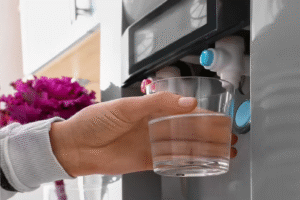Top Common Garage Door Motor Issues and How to Fix Them
7 min read
Your garage door motor, the unsung hero of your daily routine, diligently lifts and lowers that heavy barrier multiple times a day. But like any hardworking machine, it can encounter its fair share of hiccups. Ignoring these issues can lead to bigger problems down the line, potentially leaving your car stranded or compromising your home’s security.
Emu Garage Doors In this Blog guide will walk you through some of the most common garage door motor issues and equip you with the knowledge to troubleshoot and potentially fix them yourself. While we won’t be focusing on the specific regulations or common problems faced in Australia, the fundamental mechanics of garage door motors are quite universal.
Common Garage Door Motor Issues and Troubleshooting
A. The Motor Runs, But the Door Doesn’t Move
This can be particularly frustrating – you hear the motor whirring, but your garage door remains stubbornly in place.
- Possible Causes:
- Disengaged trolley/carriage: The trolley is the part that connects the motor’s drive mechanism (chain, belt, or screw) to the door itself. It can be manually disengaged, often by pulling a red emergency release cord, to operate the door during a power outage.
- Check the trolley arm: The trolley arm connects the motor to the top of the garage door. Ensure it’s securely attached at both ends and hasn’t become disconnected or damaged.
- Stripped gears inside the motor unit: Over time, the internal gears responsible for transferring power to the drive mechanism can wear down or break.
- DIY Fixes:
- How to re-engage the trolley/carriage: Locate the emergency release cord hanging from the motor unit. Ensure nothing is blocking the door’s movement. Pull the cord down and back towards the motor until you hear a click, indicating the trolley has re-engaged. You might need to manually move the door slightly to align the connection point.
- Visual inspection for broken parts: Carefully examine the chain, belt, or screw drive for any obvious breaks, tears, or significant slack. Exercise extreme caution and do not attempt to manually operate the door if the drive mechanism appears damaged.
- When to Call a Pro: If you suspect stripped gears (often indicated by a grinding noise without door movement) or if the chain, belt, or screw drive is visibly broken or severely damaged, it’s best to call a professional technician.
B. The Motor Doesn’t Run at All
Silence from your garage door motor when you press the button can be equally concerning.
- Possible Causes:
- Power outage: Check if other electrical appliances in your garage are working.
- Tripped circuit breaker: Locate your home’s electrical panel and check if the circuit breaker for the garage has tripped. Reset it if necessary.
- Unplugged motor unit: Ensure the garage door motor unit is securely plugged into a functioning power outlet.
- Faulty wall button or remote control batteries: Try using both the wall button and the remote. Replace the batteries in the remote if it’s not working.
- Wiring issues: Loose or damaged wiring within the motor unit or connecting to it can prevent power flow.
- DIY Fixes:
- Checking the power supply and circuit breaker: Verify power to the garage and reset the circuit breaker if needed.
- Ensuring the motor is plugged in: Double-check the power cord connection to the outlet.
- Replacing remote batteries and testing the wall button: A simple battery replacement can often solve the issue. Testing the wall button helps determine if the problem lies with the remote.
- When to Call a Pro: If the above steps don’t restore power to the motor, especially if you suspect wiring issues, it’s crucial to call a qualified electrician or garage door technician. Electrical problems can be dangerous to handle yourself.
C. The Door Opens or Closes Partially, Then Stops
An erratic garage door that halts mid-operation can be a safety hazard and a nuisance.
- Possible Causes:
- Obstructions in the door’s path (sensor interference): Modern garage doors have safety sensors (photo eyes) near the bottom tracks that prevent the door from closing on an obstruction. If these sensors are misaligned or blocked, the door may stop or reverse.
- Travel limit settings need adjustment: The motor has settings that tell it when to stop opening and closing. If these limits are incorrectly set, the door might stop prematurely.
- Motor overload: The motor might be overheating or encountering excessive resistance, causing it to shut down as a safety measure.
- DIY Fixes:
- Checking and clearing any obstructions: Ensure nothing is blocking the path of the door or the line of sight between the safety sensors. Check for debris, tools, or even cobwebs. The indicator lights on the sensors should be steadily lit. If they are blinking or off, try realigning them.
- Locating and adjusting the travel limit screws: Consult your garage door opener’s manual to locate the up and down travel limit adjustment screws (usually near the motor unit). Make small adjustments and test the door after each adjustment. Caution: Over-adjusting can cause the door to come off its tracks.
- When to Call a Pro: If you’re unsure how to adjust the travel limits or if the motor consistently overloads despite a clear path, it’s best to seek professional assistance.
D. The Door Reverses Unexpectedly
A garage door that closes and then immediately goes back up is a sign of a safety mechanism kicking in.
- Possible Causes:
- Safety sensor misalignment or obstruction: Similar to the previous point, misaligned or blocked safety sensors will cause the door to reverse.
- Force sensitivity settings are too high: The motor has force sensitivity settings that detect resistance. If these are set too high, the door might interpret normal closing resistance as an obstruction and reverse.
- DIY Fixes:
- Checking and realigning safety sensors: Ensure the sensors are aligned and free from obstructions. The indicator lights on both sensors should be solid.
- Locating and adjusting the force sensitivity knobs: Your opener’s manual will show the location of the force adjustment knobs (usually labeled “force” or with up/down arrows). Make small adjustments (reduce the force) and test the door after each adjustment.
- When to Call a Pro: If sensor issues persist after alignment or if adjusting the force doesn’t resolve the unexpected reversals, a professional can diagnose more complex sensor problems or motor force control issues.
E. The Motor is Excessively Noisy
While some motor noise is normal, excessive grinding, squealing, or banging can indicate a problem.
- Possible Causes:
- Lack of lubrication: Moving parts like the chain, screw, or belt, as well as rollers and hinges, need regular lubrication.
- Loose hardware (nuts, bolts, chain/belt): Vibrations can cause nuts, bolts, and the drive mechanism to loosen over time.
- Worn-out parts (gears, rollers): Internal motor gears or the door rollers themselves can wear out, causing noise.
- DIY Fixes:
- Lubricating the chain/screw/belt and rollers: Use a silicone-based lubricant specifically designed for garage doors. Apply it to the chain/screw/belt and lubricate the rollers and hinges.
- Tightening any loose hardware: Inspect all visible nuts and bolts along the tracks, door panels, and motor unit. Tighten any that are loose, but be careful not to overtighten.
- When to Call a Pro: If the noise persists after lubrication and tightening, or if you suspect worn-out internal motor parts or damaged rollers, it’s time to consult a professional for diagnosis and repair.
General Maintenance Tips to Prevent Issues
Proactive maintenance can significantly reduce the likelihood of encountering garage door motor problems:
- Regular visual inspections: Periodically examine the tracks, rollers, cables, springs (note: do not touch springs!), and the motor unit for any signs of wear, damage, or loose parts.
- Lubrication schedule: Lubricate the moving parts (chain/belt/screw, rollers, hinges) at least once or twice a year, or as recommended by the manufacturer.
- Testing safety features (reversal test): Place a 2×4 piece of wood or a similar object in the door’s path and ensure the door reverses when it comes into contact with it. Test the safety sensors by waving an object in front of them while the door is closing.
- Keeping the area around the door clear: Remove any obstructions from the tracks and ensure the safety sensors are not blocked by debris.
When to Call a Professional Garage Door Technician
While DIY troubleshooting can resolve many common issues, certain situations require the expertise and safety precautions of a professional:
- Suspected electrical issues: Never attempt to repair electrical wiring yourself if you are not a qualified electrician.
- Internal motor problems (gears, windings): Opening the motor unit can be dangerous, and complex repairs are best left to professionals.
- Broken springs or cables: These components are under extreme tension and can cause serious injury or death if mishandled. Never attempt to repair or adjust springs or cables yourself.
- If DIY fixes don’t resolve the issue: If you’ve tried the troubleshooting steps and your garage door still isn’t functioning correctly, it’s time to call in the experts.
- Lack of experience or comfort level with the repairs: If you’re uncomfortable or unsure about any aspect of the repair process, it’s always safer to call a professional.
A properly functioning garage door motor provides convenience, security, and peace of mind. By understanding common issues and knowing basic troubleshooting steps, you can often address minor problems yourself. However, always prioritize safety and don’t hesitate to call a professional garage door technician when dealing with complex or potentially dangerous repairs. Regular maintenance will go a long way in keeping your garage door operating smoothly and reliably for years to come.
If you’re experiencing issues with your garage door motor or need expert assistance with garage door motor repairs, don’t hesitate to contact Emu Garage Doors. Our experienced technicians are ready to help you get your garage door operating smoothly again. Call us today at 02 9030 0686 for prompt, professional service.






